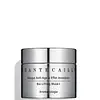What's inside
What's inside
 Key Ingredients
Key Ingredients

 Benefits
Benefits

 Concerns
Concerns

 Ingredients Side-by-side
Ingredients Side-by-side

Water
Skin ConditioningKaolin
AbrasiveBentonite
AbsorbentPropanediol
SolventGlycerin
HumectantCI 77891
Cosmetic ColorantCaprylic/Capric Triglyceride
MaskingCetearyl Alcohol
EmollientZea Mays Starch
AbsorbentPhenoxyethanol
PreservativeCeteareth-20
CleansingCaprylyl Glycol
EmollientXanthan Gum
EmulsifyingEthylhexylglycerin
Skin ConditioningTocopherol
AntioxidantLecithin
EmollientAloe Barbadensis Leaf Juice
Skin ConditioningAvena Sativa Kernel Flour
AbrasiveAllantoin
Skin ConditioningWater
Skin ConditioningCaprylic/Capric Triglyceride
MaskingPropanediol
SolventGlycerin
HumectantCoco-Caprylate/Caprate
EmollientC12-20 Acid PEG-8 Ester
EmulsifyingImperata Cylindrica Root Extract
Skin ConditioningPotassium Cetyl Phosphate
EmulsifyingCarbomer
Emulsion StabilisingSaccharide Isomerate
HumectantHydroxypropyl Methylcellulose
Emulsion StabilisingPullulan
CI 77891
Cosmetic ColorantAvena Sativa Kernel Extract
AbrasiveHydroxyacetophenone
AntioxidantSodium Hydroxide
BufferingC12-13 Alkyl Lactate
EmollientPrunus Armeniaca Kernel Oil
MaskingCitrus Aurantium Dulcis Fruit Extract
MaskingCaprylyl Glycol
EmollientEthylhexylglycerin
Skin Conditioning1,2-Hexanediol
Skin ConditioningChondrus Crispus Powder
AbrasiveBisabolol
MaskingTocopheryl Acetate
AntioxidantBrassica Campestris Seed Oil
Skin ConditioningPentylene Glycol
Skin ConditioningNannochloropsis Oculata Extract
HumectantPhytic Acid
Porphyridium Cruentum Extract
Skin ConditioningRosa Damascena Flower Oil
MaskingSodium Hyaluronate
HumectantSodium Citrate
BufferingAcacia Dealbata Flower Wax
EmollientCitrus Aurantium Amara Flower Wax
Jasminum Grandiflorum Flower Wax
MaskingRosmarinus Officinalis Leaf Extract
AntimicrobialPelargonium Graveolens Oil
MaskingCitric Acid
BufferingRosa Damascena Flower Water
MaskingAcetyl Hexapeptide-8
HumectantCentella Asiatica Extract
CleansingAcrylates/C10-30 Alkyl Acrylate Crosspolymer
Emulsion StabilisingNicotiana Sylvestris Leaf Cell Culture
Skin ConditioningN-Prolyl Palmitoyl Tripeptide-56 Acetate
Skin ConditioningPotassium Sorbate
PreservativeSodium Benzoate
MaskingPhenoxyethanol
PreservativeBiotin
AntiseborrhoeicCitronellol
PerfumingGeraniol
PerfumingLinalool
PerfumingCitral
PerfumingWater, Caprylic/Capric Triglyceride, Propanediol, Glycerin, Coco-Caprylate/Caprate, C12-20 Acid PEG-8 Ester, Imperata Cylindrica Root Extract, Potassium Cetyl Phosphate, Carbomer, Saccharide Isomerate, Hydroxypropyl Methylcellulose, Pullulan, CI 77891, Avena Sativa Kernel Extract, Hydroxyacetophenone, Sodium Hydroxide, C12-13 Alkyl Lactate, Prunus Armeniaca Kernel Oil, Citrus Aurantium Dulcis Fruit Extract, Caprylyl Glycol, Ethylhexylglycerin, 1,2-Hexanediol, Chondrus Crispus Powder, Bisabolol, Tocopheryl Acetate, Brassica Campestris Seed Oil, Pentylene Glycol, Nannochloropsis Oculata Extract, Phytic Acid, Porphyridium Cruentum Extract, Rosa Damascena Flower Oil, Sodium Hyaluronate, Sodium Citrate, Acacia Dealbata Flower Wax, Citrus Aurantium Amara Flower Wax, Jasminum Grandiflorum Flower Wax, Rosmarinus Officinalis Leaf Extract, Pelargonium Graveolens Oil, Citric Acid, Rosa Damascena Flower Water, Acetyl Hexapeptide-8, Centella Asiatica Extract, Acrylates/C10-30 Alkyl Acrylate Crosspolymer, Nicotiana Sylvestris Leaf Cell Culture, N-Prolyl Palmitoyl Tripeptide-56 Acetate, Potassium Sorbate, Sodium Benzoate, Phenoxyethanol, Biotin, Citronellol, Geraniol, Linalool, Citral
 Reviews
Reviews

Ingredients Explained
These ingredients are found in both products.
Ingredients higher up in an ingredient list are typically present in a larger amount.
This ingredient is an emollient, solvent, and texture enhancer. It is considered a skin-softener by helping the skin prevent moisture loss.
It helps thicken a product's formula and makes it easier to spread by dissolving clumping compounds.
Caprylic Triglyceride is made by combining glycerin with coconut oil, forming a clear liquid.
While there is an assumption Caprylic Triglyceride can clog pores due to it being derived from coconut oil, there is no research supporting this.
Learn more about Caprylic/Capric TriglycerideCaprylyl Glycol is a humectant and emollient, meaning it attracts and preserves moisture.
It is a common ingredient in many products, especially those designed to hydrate skin. The primary benefits are retaining moisture, skin softening, and promoting a healthy skin barrier.
Though Caprylyl Glycol is an alcohol derived from fatty acids, it is not the kind that can dry out skin.
This ingredient is also used as a preservative to extend the life of products. It has slight antimicrobial properties.
Learn more about Caprylyl GlycolCi 77891 is a white pigment from Titanium dioxide. It is naturally found in minerals such as rutile and ilmenite.
It's main function is to add a white color to cosmetics. It can also be mixed with other colors to create different shades.
Ci 77891 is commonly found in sunscreens due to its ability to block UV rays.
Learn more about CI 77891Ethylhexylglycerin (we can't pronounce this either) is commonly used as a preservative and skin softener. It is derived from glyceryl.
You might see Ethylhexylglycerin often paired with other preservatives such as phenoxyethanol. Ethylhexylglycerin has been found to increase the effectiveness of these other preservatives.
Glycerin is already naturally found in your skin. It helps moisturize and protect your skin.
A study from 2016 found glycerin to be more effective as a humectant than AHAs and hyaluronic acid.
As a humectant, it helps the skin stay hydrated by pulling moisture to your skin. The low molecular weight of glycerin allows it to pull moisture into the deeper layers of your skin.
Hydrated skin improves your skin barrier; Your skin barrier helps protect against irritants and bacteria.
Glycerin has also been found to have antimicrobial and antiviral properties. Due to these properties, glycerin is often used in wound and burn treatments.
In cosmetics, glycerin is usually derived from plants such as soybean or palm. However, it can also be sourced from animals, such as tallow or animal fat.
This ingredient is organic, colorless, odorless, and non-toxic.
Glycerin is the name for this ingredient in American English. British English uses Glycerol/Glycerine.
Learn more about GlycerinPhenoxyethanol is a preservative that has germicide, antimicrobial, and aromatic properties. Studies show that phenoxyethanol can prevent microbial growth. By itself, it has a scent that is similar to that of a rose.
It's often used in formulations along with Caprylyl Glycol to preserve the shelf life of products.
Propanediol is an all-star ingredient. It softens, hydrates, and smooths the skin.
It’s often used to:
Propanediol is not likely to cause sensitivity and considered safe to use. It is derived from corn or petroleum with a clear color and no scent.
Learn more about PropanediolWater. It's the most common cosmetic ingredient of all. You'll usually see it at the top of ingredient lists, meaning that it makes up the largest part of the product.
So why is it so popular? Water most often acts as a solvent - this means that it helps dissolve other ingredients into the formulation.
You'll also recognize water as that liquid we all need to stay alive. If you see this, drink a glass of water. Stay hydrated!
Learn more about Water